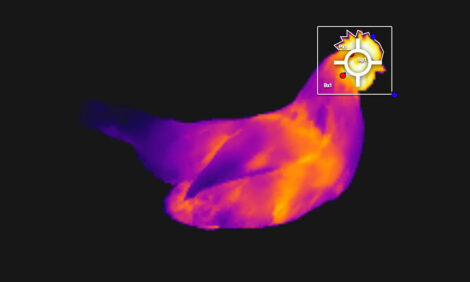



New Vaccines Target Salmonella and Clostridium in Poultry
In partnership with the Alberta Livestock and Meat Agency (ALMA), Dr Christine Szymanski and Dr Mario Feldman are leading a team of researchers in creating a new vaccine for poultry that targets two pathogens – Salmonella and Clostridium perfringens.
Salmonella species are bacteria that can cause foodborne illness in humans when they eat contaminated eggs or other poultry products that are inappropriately cooked. By targeting Salmonella through flock vaccination, contamination of eggs and meat can be reduced without the use of broad scope antibiotics.
The poultry industry has been looking for ways to reduce its use of antibiotics due to concerns around the emergence of antibiotic resistant pathogens. Since only a very small portion of Salmonella species can cause foodborne illnesses in humans, a vaccine would need to target only these pathogenic species.
The second pathogen targeted by the research team is Clostridium perfringens, which causes necrotic enteritis in broiler flocks. This infectious disease can spread through fecal matter and have a fatality rate as high as 50 per cent depending on conditions. The financial impact of C. perfringens on producers can be quite significant and the current method for controlling the disease is through antibiotic treatment. Development of a vaccine would prove an effective alternative for improvement of flock health.
Dr Szymanski and Dr Feldman are world leaders in bacterial glycomics - the study of the structure, biosynthesis, biology and evolution of sugars that are widely distributed in nature and the proteins that recognize them. Because they are specialists in the field of bacterial glycoengineering, Dr Szymanski and Dr Feldman’s team is focusing on sugar structures shared by the vast majority of these two pathogens, instead of developing vaccines for each type of Salmonella species and C. perfringens found in chickens.
Dr Szymanski explains: "Like all of our cells, bacteria also require proteins and sugar structures to function properly. The sugar structures, the glycans, are key to the vaccine we are creating. The glycans from pathogenic Salmonella and C. perfringens are expressed in non-pathogenic strains as well. This means we can create a vaccine from harmless bacterial strains that will help the bird’s immune system identify and destroy the pathogenic strains. In this way, a single vaccine will simulate an immune response in the bird that will protect it from a broad array of Salmonella and C. perfringens strains."
Dr Susan Novak, ALMA’s Research Manager, said: "A glycan-based vaccine would be a transformative advancement for the poultry industry. The use of antibiotics could be reduced if producers are able to give their birds a dual vaccine that boosts the immunity against multiple strains with a single shot.
"We are extremely lucky to have scientists with this unique expertise working on novel vaccines that increase overall animal health. Alberta is leading the world in this area and that is a point of pride for our industry as well as a real competitive edge," she added.
August 2013








